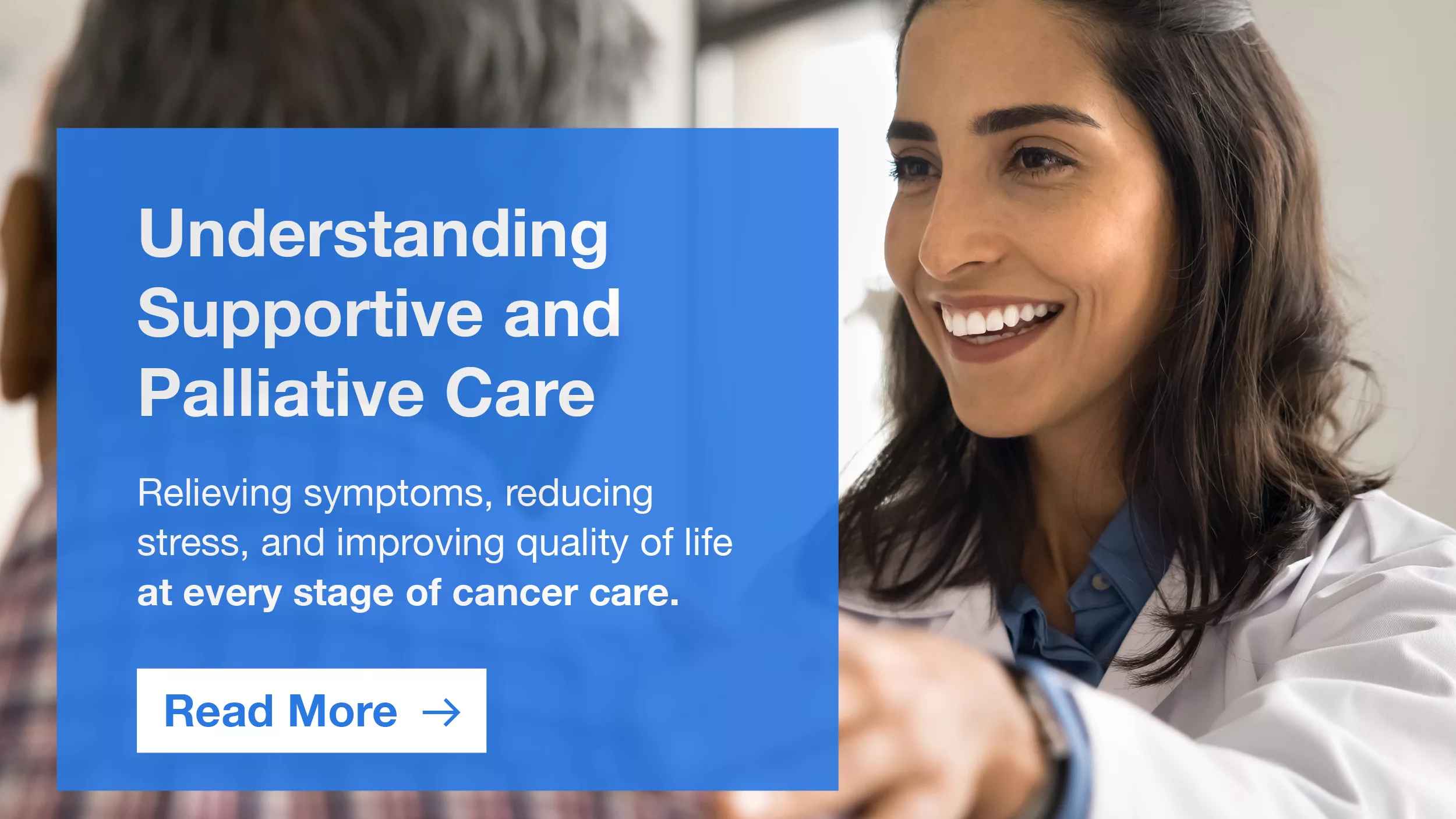When facing a cancer diagnosis, most people focus on treatments like chemotherapy, surgery, radiation, or immunotherapy. But another essential part of cancer care often goes underrecognized: supportive and palliative care.
These services help manage side effects, ease emotional burdens, and provide personalized support that improves comfort and quality of life. It’s important to understand what supportive and palliative care really mean—and how they can make a meaningful difference throughout the cancer journey.
What’s the Difference Between Supportive and Palliative Care?
- Supportive care includes a wide range of services designed to help patients manage the side effects of cancer and its treatment, cope with emotional challenges, and maintain well-being throughout the course of care.
- Palliative care is a specialized type of supportive care that focuses on relieving symptoms, pain, and stress related to serious illness. It’s appropriate at any stage of cancer, not just end-of-life, and is often provided alongside curative or life-prolonging treatment.
Both aim to improve quality of life for patients and families by addressing physical, emotional, social, and spiritual needs.
Why Supportive and Palliative Care Matter
Cancer doesn’t just affect the body; it impacts every part of life. Treatment can be physically taxing and emotionally overwhelming. Supportive and palliative care helps patients and families navigate these challenges with strength and clarity.
Benefits include:
- Relief from symptoms like fatigue, pain, nausea, anxiety, or shortness of breath
- Emotional support through counseling, social work, or spiritual care
- Guidance on nutrition, activity, and sleep to help patients feel their best
- Support for families and caregivers during treatment and beyond
- Improved communication and decision-making between patients, caregivers, and care teams
What Services Are Included?
Supportive and palliative care services can vary by practice and clinic, but often include:
- Symptom and pain management
- Palliative care consults
- Emotional support and counseling
- Spiritual care
- Advance care planning
- Psychosocial support
In addition to supportive and palliative care, many oncology practices offer a range of patient support services designed to enhance your well-being during and after treatment. These may include survivorship programs, nutrition counseling, social work and financial guidance, caregiver support, transportation assistance, and wellness classes. Together, they support your long-term quality of life and help you feel more confident and supported throughout your care. Ask our care team about the full range of services available—we’re here to help guide you every step of the way.
Who Can Benefit?
The short answer: anyone affected by cancer.
Supportive and palliative care are appropriate whether you’re newly diagnosed, in active treatment, recovering after treatment, or living with advanced cancer. These services are personalized to your needs and can begin at any point in your care, not just when symptoms become overwhelming.
All Parts of Your Care, Connected
Supportive and palliative care involves a coordinated team of experts working alongside your oncology team. This often includes doctors, nurses, social workers, dietitians, therapists, chaplains, and other specialists, all focused on your comfort, clarity, and quality of life.
Supportive and palliative care are not “extras”; they are essential parts of whole-person cancer care. They help ensure that your symptoms are managed, your voice is heard, and your emotional and physical needs are supported every step of the way.
If you or a loved one is navigating cancer, ask your care team about supportive and palliative care services available to you. You deserve care that supports all of you, not just illness.


